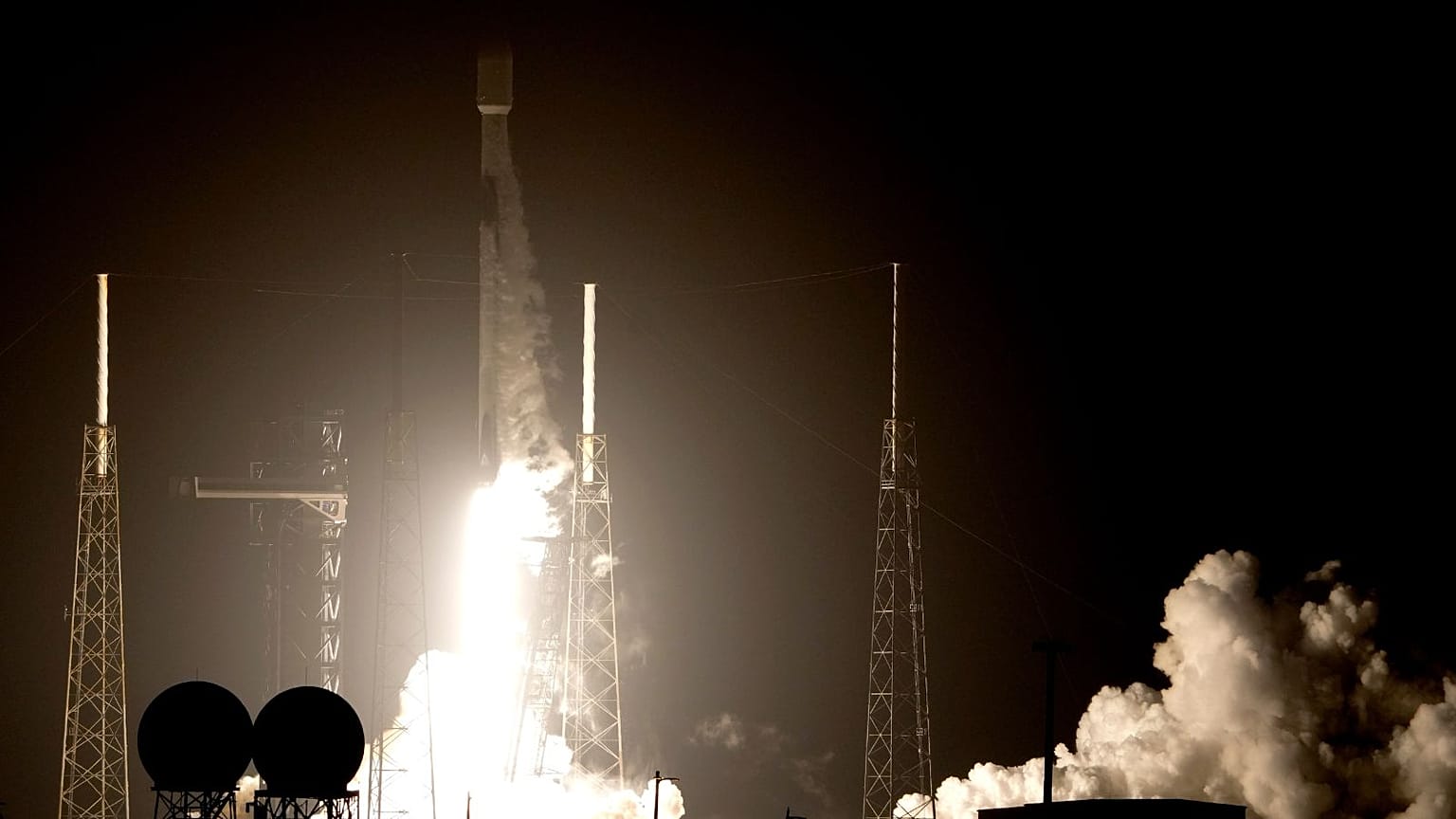With 200 colour vision, the SpaceX-launched satellite can better predict when harmful algal blooms and hurricanes will happen.
A satellite capable of capturing the world’s oceans and atmosphere in never-before-seen detail achieved lift off this morning.
NASA’s newest climate satellite known as PACE launched aboard a SpaceX rocket from Florida, and will now spend at least three years studying the oceans from 676 kilometres (420 miles) up.
Its launch came as EU climate scientists confirmed that global heating has for the first time exceeded 1.5C across an entire year.
“With this new addition to NASA’s fleet of Earth-observing satellites, PACE will help us learn, like never before, how particles in our atmosphere and our oceans can identify key factors impacting global warming,” says NASA Administrator Bill Nelson.
“Missions like this are supporting the Biden-Harris Administration’s climate agenda and helping us answer urgent questions about our changing climate.”
NASA’s newest satellite will help predict extreme weather events
The PACE satellite stands for Plankton, Aerosol, Climate, ocean Ecosystem. Its $948 million (€880 million) mission began before dawn today, with the Falcon rocket heading south over the Atlantic to achieve a rare polar orbit.
It will scan the globe daily with two of the science instruments. A third instrument will take monthly measurements.
“It’s going to be an unprecedented view of our home planet," says project scientist Jeremy Werdell.
The observations will help scientists improve hurricane and other severe weather forecasts, detail Earth's changes as temperatures rise and better predict when harmful algal blooms will happen.
What’s different about NASA’s PACE satellite?
NASA already has more than two dozen Earth-observing satellites and instruments in orbit. But Pace should give better insights into how atmospheric aerosols like pollutants and volcanic ash and sea life like algae and plankton interact with each other.
“PACE will give us another dimension” to what other satellites observe, says NASA’s director of Earth science, Karen St. Germain.
PACE is the most advanced mission ever launched to study ocean biology.
Current Earth-observing satellites can see in seven or eight colours, according to Werdell. PACE will see in 200 colours that will allow scientists to identify the types of algae in the sea and types of particles in the air.
Scientists expect to start getting data in a month or two.
NASA is collaborating with India on another advanced Earth-observing satellite due to launch this year. Named Nisar, it will use radar to measure the effect of rising temperatures on glaciers and other melting icy surfaces.
NASA’s PACE project persevered despite efforts by the Trump administration to cancel it.
“It has been a long, strange trip as they say,” Werdell said before the launch.


















